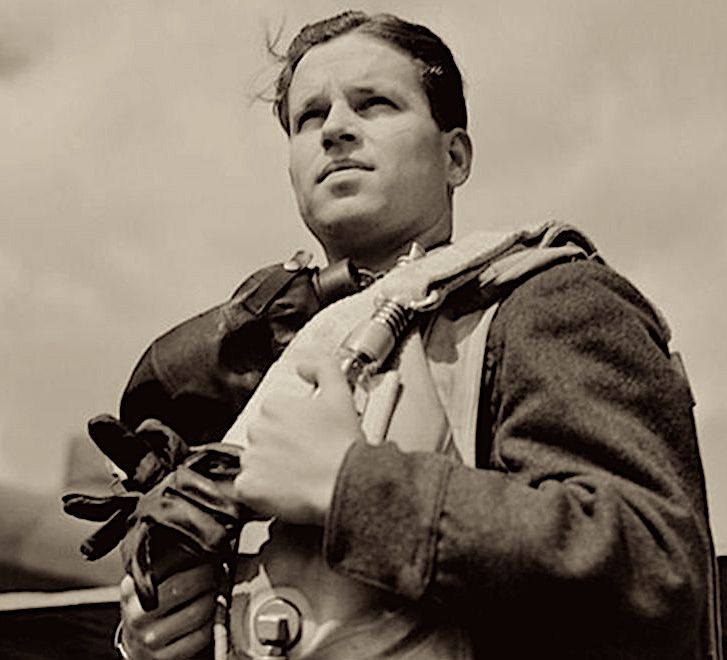The story of the raid on dams in Germany's Ruhr Valley by the RAF’s 617 Squadron in May 1943 has become a subject of perennial fascination as well as a potent national myth. The 1955 film The Dam Busters seems to be always showing on a TV channel somewhere, while previous TV documentaries on the subject have included Dambusters Declassified, Dambusters: Building the Bouncing Bomb and The Race to Smash the German Dams. Peter Lord of the Rings Jackson has been planning to shoot a new version of the Dam Busters movie since 2008, but there’s no sign of it yet.
So what could Dan Snow’s new three-part series (Channel 5) bring to the party? Well, not much that hasn’t been covered elsewhere, though he did track down a 1/50th scale model of a German dam that had been built for testing purposes near a research facility in Watford. However, running the films in three parts on consecutive nights did at least help to build up a sense of anticipation for the high drama of the attack. This was the same format used for Snow and Kate Humble’s Battle of Britain programmes back in July (also on C5). There was no Humble here, but quite a long list of talking heads including the official historian of 617 Squadron, all snipped into exasperatingly brief soundbites.
Snow makes a robust and enthusiastic presenter, even if he always seems to be shouting at someone 20 yards behind the camera. The great thing about the Dambusters, though, is that there’s a goldmine of archive film tracing the development of the bouncing bomb created by scientist Barnes Wallis, while the mixed backgrounds of the flyers – Old Etonian Henry Maudslay, the larger-than-life American Joe McCarthy, the famously dour New Zealander Les Munro etc – lend plenty of human colour to the story. Their CO, Wing Commander Guy Gibson (pictured below), was a steely martinet who inspired awe but not affection, though he was distraught at the death of his much-loved black labrador on the day of the great raid. The interminable controversy over whether to use the dog’s name – it was the now-unutterable N-word – was avoided here by describing him as “Guy Gibson’s dog”.
 The slow-motion film of Wallis’s bomb being tested on the Kent and Dorset coasts while assorted boffins and Air Ministry types look on expectantly feels like science fiction from a parallel dimension, with early spherical versions of the bomb shattering on impact with the water before Wallis deduced that a drum-shaped configuration was the way to go. Wallis’s early Professor Branestawm–style experiments, firing marbles from a catapult at a tin tub full of water in his back garden, had a delightful aura of lunatic eccentricity about them, while the primitive bomb-aiming gadget used by the RAF flyers looked like something that fell out of a Corn Flakes packet.
The slow-motion film of Wallis’s bomb being tested on the Kent and Dorset coasts while assorted boffins and Air Ministry types look on expectantly feels like science fiction from a parallel dimension, with early spherical versions of the bomb shattering on impact with the water before Wallis deduced that a drum-shaped configuration was the way to go. Wallis’s early Professor Branestawm–style experiments, firing marbles from a catapult at a tin tub full of water in his back garden, had a delightful aura of lunatic eccentricity about them, while the primitive bomb-aiming gadget used by the RAF flyers looked like something that fell out of a Corn Flakes packet.
Snow’s films traced the planning of the raid, the feverish rush to get the bombs built and modify a squadron of Lancasters to carry them, and then the attack itself. The courage and flying skills of the crews, who had to fly 30-ton bombers at 100 feet over enemy territory in darkness, was staggering, and Snow’s low-level flight over the Derwent reservoir where they trained for the attack could hardly be expected to approximate the real thing. Bomber Command chief Arthur Harris, fixated on bombing German cities, was typically scornful of this seemingly crackpot scheme, and expressed his desire to “get some of these lunatics controlled and if possible locked up.”
The raid hit its targets and was a morale-boosting success, but 53 out of 133 flyers were killed. Its strategic value remains debatable, as historian Max Hastings, author of a recent book about the Dambusters raid, gloomily reminded us. The fact that many of the casualties drowned by flooding were foreign labourers forced to work for the Nazis added a further bitter twist. As Gibson himself wrote afterwards, “No one likes mass slaughter and we did not like being the authors of it”. Nonetheless, Gibson's inspirational efforts brought him the Victoria Cross.















Add comment